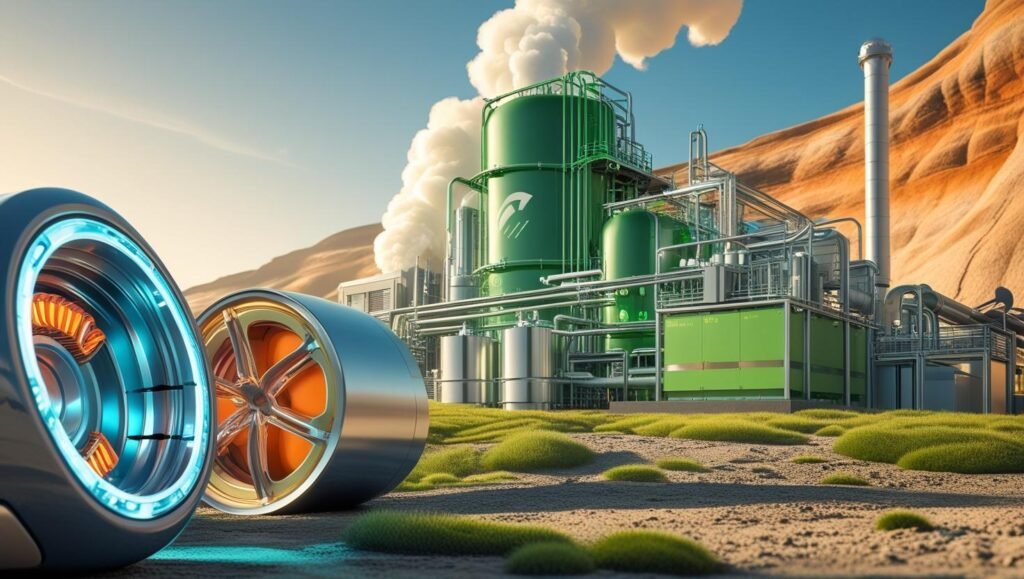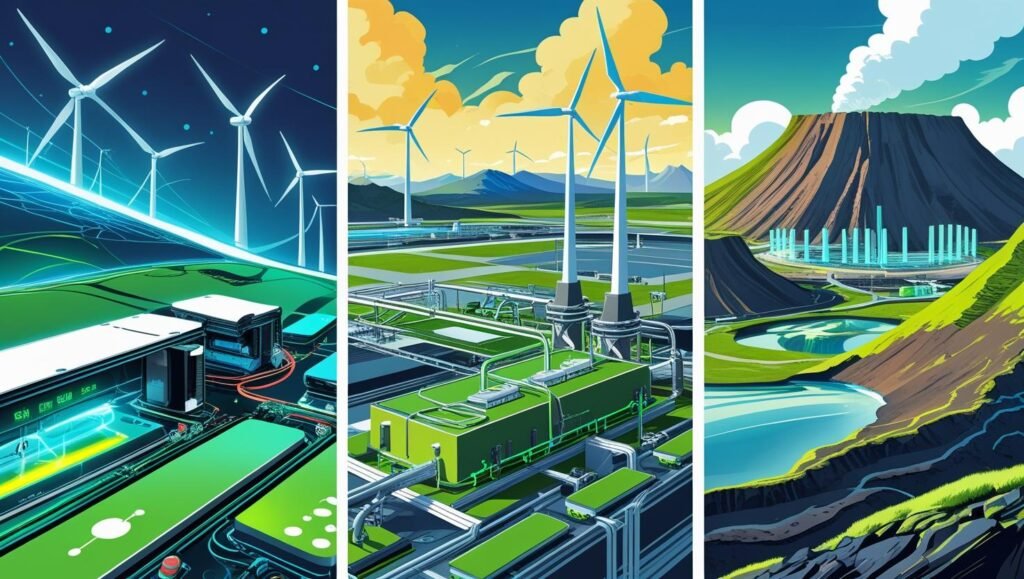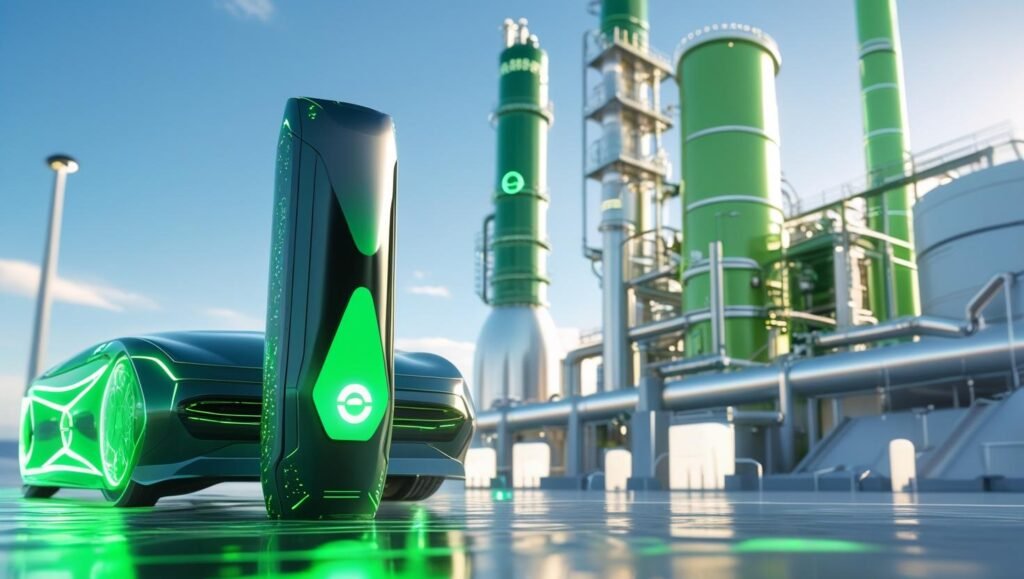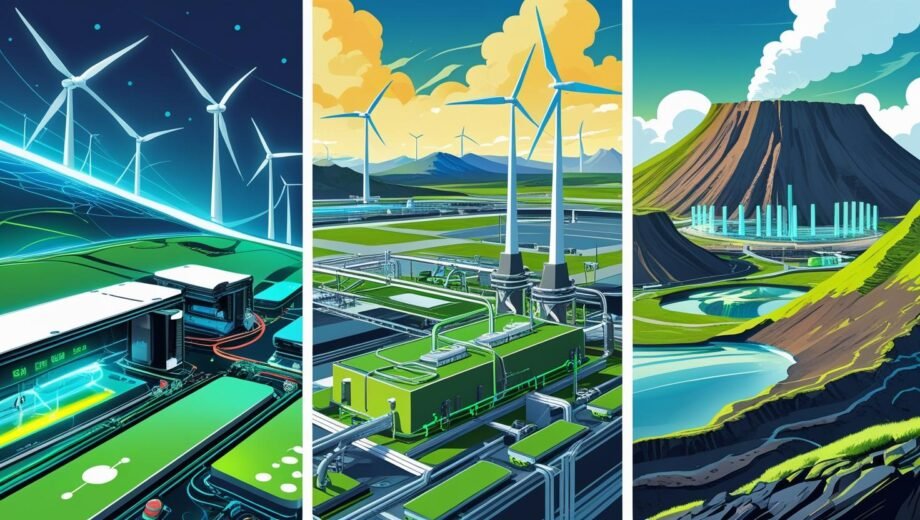The global shift towards green energy is no longer a distant dream but a rapidly accelerating reality. As we confront the challenges of climate change and the persistent green energy crisis in some regions, the imperative to develop and deploy cutting-edge clean tech becomes ever more urgent. So, what's next for green energy solutions? The future of green energy solutions is bright, driven by relentless innovation, strategic investments, and a global commitment to a sustainable planet.
Beyond Wind and Solar: Diverse Green Energy Solutions
While solar and wind power have led the charge in the green energy revolution, the future of green energy solutions involves a diversification of technologies, making the grid more resilient and accessible:

- Advanced Energy Storage: The intermittency of solar and wind has been a major challenge. The future of green energy solutions relies heavily on breakthroughs in battery technology (e.g., solid-state batteries, flow batteries), compressed air energy storage, and even gravity-based systems. These innovations ensure that clean energy is available on demand, solving a critical aspect of the green energy crisis. (Source: Happy Eco News, “Green Tech Innovations That Are Changing the World”)
- Green Hydrogen: Produced by splitting water using renewable energy, green hydrogen is emerging as a cornerstone of the clean energy transition. It's a versatile fuel that can decarbonize hard-to-abate sectors like heavy industry and long-haul transport and even serve as a large-scale energy storage medium (Source: Manifestly Checklists, “Renewable Energy Solutions for a Sustainable Future 2025”)
- Enhanced Geothermal Systems (EGS): Tapping into the Earth's continuous heat offers a stable, baseload green energy supply. Advances in drilling technology are making geothermal viable in more locations, going beyond traditional volcanic regions. The future of green energy solutions will see this reliable source play a larger role. (Source: The Wilderness Society, “The future of green energy: how renewable sources are changing the world”)
- Tidal and Wave Energy: Harnessing the predictable power of ocean tides and waves offers another consistent renewable energy source, especially for coastal communities.
- Sustainable Bioenergy: Innovations in sustainable biofuels and biomass conversion technologies are making bioenergy a more viable and environmentally friendly option, focusing on waste-to-energy processes and algae-based biofuels. (Source: BinBin.tech, “The Future of Green Energy: Innovations and Breakthroughs”)

Future Energy Innovations: Smart Grids and AI
The integration of advanced digital technologies is crucial for the future of green energy solutions:
- Smart Grids: These intelligent networks use sensors, AI, and real-time data to optimize energy flow, manage intermittent renewable energy sources, and improve grid resilience. Modernizing the grid is a “hidden bottleneck” of the energy transition, and significant investment is needed. (Source: GE News, “GE Renewable Energy Chief Sees Big Things Ahead For Offshore Wind And The Grid”)
- AI and Machine Learning: AI is revolutionizing green energy solutions by predicting energy demand, optimizing turbine performance, managing smart buildings, and even accelerating the discovery of new materials for clean tech. This is a major driver of efficiency and cost reduction, helping to address the green energy crisis. (Source: GlobeNewswire, “Green Technology & Sustainability Market Report 2025: Global Green Tech Market to Skyrocket to $73.9 Billion by 2030, Driven by AI & ESG Compliance”)
- Decentralized Energy Systems: The proliferation of rooftop solar, community microgrids, and local battery storage empowers consumers and increases energy resilience, reducing reliance on centralized power plants. This is a key aspect of green energy solutions for urban and rural areas.

The Role of Industry Leaders and Government Policies
Major players in the energy sector are evolving. While traditional giants like General Electric renewable energy continue to be significant, their focus is increasingly on clean tech. GE Vernova (spun off from GE) is prioritizing decarbonization solutions, including offshore wind, grid modernization, and hydrogen technology. (Source: GE Vernova, “Future of Energy: Decarbonization in Action”)
Government policies are also critical for the future of green energy solutions. In the US green technology sector, for instance, significant investments are being made in grid upgrades, manufacturing, and R&D, with the green technology and sustainability market projected to grow from USD 25.47 billion in 2025 to USD 73.90 billion by 2030. (Source: ResearchFDI, “The Impact of Green Technology on Regional Economic Growth: A 2025 Outlook”) These policies provide incentives for businesses and individuals to invest in green tech solutions.
Addressing the Green Energy Crisis
The term “green energy crisis” often refers to challenges associated with the rapid transition, such as grid stability issues, supply chain vulnerabilities, or the initial investment costs. The future of green energy solutions directly addresses these:
- Diversification: A mix of renewable energy sources (solar, wind, geothermal, hydro) provides greater reliability than reliance on a single source.
- Storage and Smart Grids: These technologies mitigate intermittency and ensure a stable supply.
- Cost Reduction: Continued innovation and economies of scale are rapidly bringing down the cost of green energy, making it increasingly competitive with fossil fuels.
- Global Collaboration: International cooperation on green tech development and deployment helps overcome technological and financial barriers, accelerating global green energy solutions.
How to Invest in Green Tech Solutions
For those looking to invest in green tech solutions, the opportunities are vast:
- Renewable Energy Infrastructure: Investing in large-scale solar and wind energy farms, and associated grid upgrades.
- Battery Technology: Supporting companies developing advanced energy storage solutions.
- Hydrogen Production and Application: Investing in firms focused on green hydrogen generation and its industrial uses.
- Sustainable Transportation: From EV manufacturing to charging infrastructure.
- Green Buildings and Smart Home Tech: Investing in companies that create energy-efficient building materials and smart home energy management systems.
The future of green energy solutions is dynamic and promising. With continued innovation in clean tech, strategic investments, and a concerted global effort, we can move beyond the green energy crisis and build a truly sustainable, energy-secure future for all.
Want to Explore More?
Read our latest piece: Green Technologies of the Future: Which Developments Will Save the World?.
Comment below: What’s your take on the environmental cost of green tech?
Tag us on social media using #GreenTechRealityCheck
nature.com+7thenevadaindependent.com+7lithiumharvest.com+7
Have questions or thoughts? Comment below and let us know what more you’d like to learn about green technology—we’d love to hear from you!







